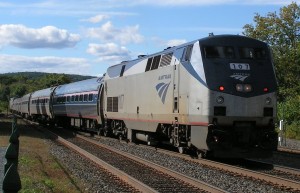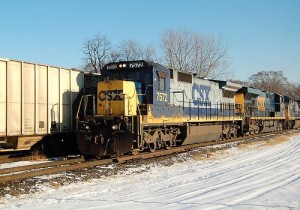One Voice, Speaking for Rail, Is Now on Track
It’s no secret that there has been an increasing focus on the need to expand and improve the capacity of our country’s railroads. Not just passenger trains, but freights as well.
 There has been a huge resurgence of interest in train travel over the past several years. Amtrak’s ridership has been up six years in a row, some 15 percent in 2008 alone. Commuter rail is up, too. Way up … even in Southern California, home of the freeway where car has been king for decades. A combination of three factors has caused this epic shift in transportation preferences: the volatile price of gasoline, more chaos and less reliability with the airlines, and a sharpened public awareness of the environmental benefits.
There has been a huge resurgence of interest in train travel over the past several years. Amtrak’s ridership has been up six years in a row, some 15 percent in 2008 alone. Commuter rail is up, too. Way up … even in Southern California, home of the freeway where car has been king for decades. A combination of three factors has caused this epic shift in transportation preferences: the volatile price of gasoline, more chaos and less reliability with the airlines, and a sharpened public awareness of the environmental benefits.
 Feight railroads have all experienced unprecedented growth, too. As the price of gas spiked with a corresponding increase in the cost of truck transport, shippers began turning to rail, which is almost always cheaper and nearly as fast. In addition – and isn’t this refreshing! – my contacts at CSX report that many shippers, like commuters, are switching to rail because they have learned it’s a more environmentally-friendly alternative.
Feight railroads have all experienced unprecedented growth, too. As the price of gas spiked with a corresponding increase in the cost of truck transport, shippers began turning to rail, which is almost always cheaper and nearly as fast. In addition – and isn’t this refreshing! – my contacts at CSX report that many shippers, like commuters, are switching to rail because they have learned it’s a more environmentally-friendly alternative.
Ah, but the problem is to make sure the federal government, holder of the purse strings for all that stimulus money, understands the pressing need for improving the rail infrastructure for both passenger and freight trains.
 Let us hope that together, and speaking with one voice, OneRail can make sure that a significant chunk of those stimulus dollars are spent on trains … more trains, better trains, faster trains, safer trains, on-time trains.
Let us hope that together, and speaking with one voice, OneRail can make sure that a significant chunk of those stimulus dollars are spent on trains … more trains, better trains, faster trains, safer trains, on-time trains.


